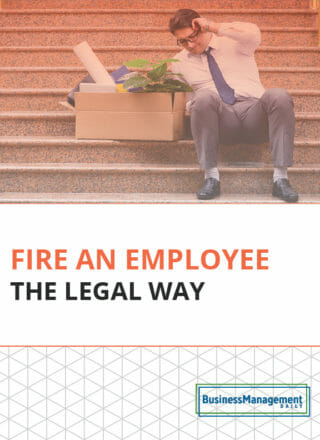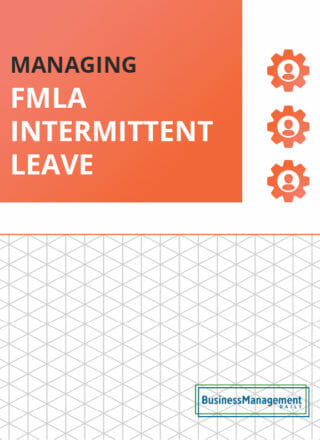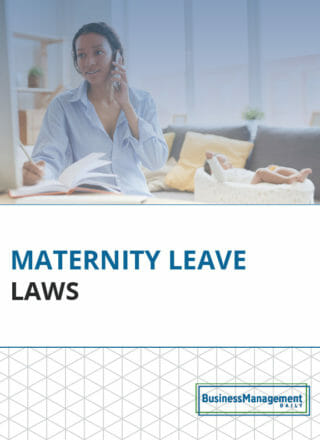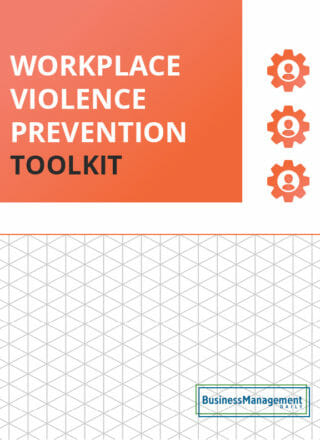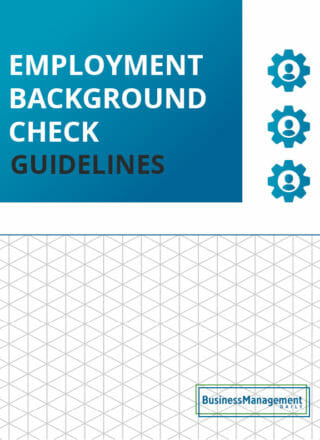EEOC wrongful termination claims and how employers can avoid them
Even though almost every state features some form of at-will employment (except Montana), that doesn’t mean employers can terminate employees with impunity. In particular, there are state and federal laws in place that protect employees from wrongful termination, such as firing an employee for a discriminatory reason or for being a whistleblower.
Should you breach an employment contract or fire someone based on their gender identity, sexual orientation, age, race, national origin, disability, or genetic information — you may receive an EEOC wrongful termination claim. While a claim doesn’t mean that your organization is guilty, it will lead to an official U.S. Equal Employment Opportunity Commission investigation.
You’ll also need to investigate the claim on your end, as the EEOC will dismiss the case if you can provide proof that you terminated the employee for valid reasons. If you can’t prove your innocence, it could lead to a wrongful termination lawsuit, which is never good news for an organization.
In fact, nearly 60% of retaliation/wrongful termination cases are won by employees, so the odds aren’t in your favor.
However, the best protections against receiving an EEOC wrongful termination claim are to educate yourself on employment law and enact strict employment discrimination policies. Also, knowing how to respond to an EEOC complaint properly is a useful skill for any employer.
With that in mind, we’ve put together this guide breaking down the EEOC wrongful termination process. By the end, you’ll know exactly how to prevent discrimination, retaliation, and wrongful termination cases — so read on to learn more.
What’s at-will employment?
As stated in the intro, every state besides Montana in the US features at-will employment.
What’s that?
At-will employment means that an employer can terminate an employee at any time for any reason without notice, so long as the reason isn’t illegal. Conversely, employees are free to leave their positions for any time and for any reason in at-will states. It provides a certain amount of flexibility for employers and employees, which is generally seen as a good thing.
For example, if an employee wants to advance their career and move on to greener pastures, they’re free to do so whenever a better opportunity comes along. On the flip side, employers have the freedom to get rid of problematic employees that consistently underperform, hurt employee morale, or for any other reason.
However, there are a few exceptions to at-will employment, so let’s take a look at them all.
Exceptions to at-will employment
While an employer can terminate an employee for nearly any reason, it’s illegal if an employer fires:
-
Someone under an existing contract. Even in at-will states, employers still need to honor their employment contracts. If you’ve signed an employee for five years, you’ll have to retain them until the contract is up, even if they aren’t working out as well as you’d hoped.
-
Note: Some contracts feature ‘just cause’ stipulations, which means the employer can break the contract and fire the employee if they fail to meet certain performance expectations.
-
-
An employee for a discriminatory reason. Regardless if a state is at-will or not, it’s always illegal to fire an employee based on their sex, age, gender identity, national origin, disability, national origin, or genetic information. There are both federal and state laws that protect employees from wrongful termination cases (more on this in a bit).
-
An employee is protected under public policy. Besides the federal laws enforced by the EEOC, there are also public policies that protect both federal employees and private-sector employees from discrimination and retaliation. The Whistleblower Protection Act protects federal employees, and OSHA protects private-sector workers from being fired for acting as a whistleblower.
If you fire an employee for any of these reasons, you may receive an EEOC wrongful termination claim, so beware.
Which federal laws does the EEOC enforce?
The EEOC is a federal agency that exists to enforce anti-discrimination laws from both public and private employers.
Here’s an overview of all the employment laws that the EEOC enforces:
-
Title VII of the Civil Rights Act of 1964. This is what makes it illegal to discriminate against someone based on their race, color, religion, sex, or national origin. It also protects employees from retaliation if an employer fires them for complaining about discrimination, participating in a discrimination proceeding, or reasonably opposing discrimination.
-
The Pregnancy Discrimination Act. This Act amended Title VII of the Civil Rights Act to make it illegal to discriminate against a woman based on pregnancy, childbirth, or a condition related to the two.
-
The Pregnant Workers Fairness Act of 2022. This law is a tad different than the Pregnancy Discrimination Act in that it requires employers to provide reasonable accommodations for pregnant workers (as long as it doesn’t create an undue hardship on the employer).
-
The Equal Pay Act of 1963. Ever since this law went into effect, it’s been illegal to pay men and women different wages for completing the same work. The law also protects employees from retaliation.
-
Title I of the Americans with Disabilities Act of 1990 (ADA). This law made it illegal to discriminate against employees based on a disability for both private employers and state/local governments.
-
Sections 505 and 501 of the Rehabilitation Act of 1973. While ADA applies to private sector employees, this law protects federal employees from discrimination against disabilities.
-
The Age Discrimination in Employment Act of 1967 (ADEA). It’s illegal to not hire or fire someone based on their age because of this law (specifically, those aged 40 or older).
-
Title II of The Genetic Information Nondiscrimination Act of 2008 (GINA). As an employer, you aren’t able to discriminate against employees based on their genetic information, and this is the law that makes it illegal.
Violating any of these federal laws can result in a discrimination complaint or EEOC wrongful termination claim, both of which aren’t good for your organization’s reputation.
To avoid attracting attention from the EEOC and wrongful termination attorneys, you should enact anti-discrimination policies that mirror the employment laws above.
EEOC wrongful termination settlements
Should an employee file a wrongful termination claim against your organization, the EEOC’s goal when settling is to restore the employee’s way of life before the discrimination occurred. For most wrongful termination cases, that means giving the employee their job back and reimbursing them for any missed paychecks.
Additionally, the EEOC will require that you change your internal processes and company culture to stop discriminating against employees. They may also be able to recover legal fees and court costs.
If your organization goes to court and loses, the employee can win compensatory and punitive damages. Compensatory damages involve reimbursing the employee for any extra costs they had to incur because of the discrimination, such as finding a new job or hiring a wrongful termination lawyer.
On the other hand, punitive damages exist to punish the employer for their negligence. That means you’ll have to pay an additional recompense on top of any compensatory damages paid to the employee.
Given the financial cost and blow to your reputation, you have every incentive to avoid discrimination and wrongful termination claims like the plague.
How to respond to an EEOC wrongful termination claim
Should the worst-case scenario happen and you receive a discrimination claim from the EEOC, you need to know how to respond. A mistake many employers make is to simply ignore the claim under the false belief that EEO laws don’t apply to them.
Regardless of the size of your organization, all private and public employers must adhere to the federal laws that the EEOC enforces. Ignoring the claim heightens the chances that you’ll get taken to court and lose, so you should treat it very seriously.
Here are the steps you should take if you receive a charge of discrimination from the EEOC.
Give a complete overview of the situation
The claim probably only contains part of the story, so you have a unique opportunity to provide a broader overview of the entire issue. Also, don’t forget to clearly state the legal reason you let the employee go, such as poor performance.
Include relevant documentation
These types of situations are why you should keep a paper trail of virtually everything that occurs in your work environment. Performance reviews, time cards, written warnings, and recorded disciplinary actions are all great documents to include here, as they’ll provide evidence for your case.
Mention similar decisions in the past
Have you let other employees go for the same reason in the past? If so, you should bring them up in your response, especially if they didn’t share the same protected characteristics as the current employee filing the claim.
How employers can avoid wrongful termination claims
Since discrimination and wrongful termination, claims can be so harmful to your organization, your best bet is to put defenses in place to ensure they don’t happen. Here are the best measures you can take to prevent instances of wrongful termination from occurring at your organization.
Create and enforce anti-discrimination policies
Remember the employment laws we listed before that the EEOC enforces? You should use them as a guide when creating anti-discrimination and harassment policies for your workplace.
Make it explicitly forbidden for managers to hire or fire someone based on their race, sex, gender identity, disability, age, national origin, or genetic information. Besides that, do your best to provide reasonable accommodations for employees that have disabilities like ADHD or that are pregnant.
Ban retaliation in all its forms
Another thing you should ban in your organization is retaliation. That’s where managers fire employees for speaking out/filing a claim about discrimination or harassing behavior. Retaliation can also occur against employees that took part in discrimination hearings or supported an employee that was discriminated against.
In addition to firing employees outright, it’s also illegal to demote them or give them the cold shoulder if they speak out. This is known as ‘constructive discharge,’ and it’s treated equally to retaliation and wrongful termination in the eyes of the law.
Document all disciplinary actions
As stated before, it becomes far easier to defend your organization from claims of discrimination or wrongful termination when you have lots of documentation proving your case. As such, one of the best ways to avoid these claims is to enact strict documentation policies at your organization.
Keep a record of employee performance reviews, medical records, disciplinary actions, written warnings, time cards, and pay stubs. That way, you’ll be able to prove if you fired an employee due to poor attendance, a faltering performance, or inappropriate behavior.
Provide medical leave for employees
If you deny your employee’s requests for medical leave, don’t be surprised if you start receiving discrimination claims from the EEOC.
Federal laws like the Family Medical Leave Act (FMLA) and USERRA provide employees with the right to take protected medical leave when they need it. To avoid violating federal law and landing in hot water with the EEOC, provide medical leave to your employees without penalty.
Closing thoughts: EEOC Wrongful Termination
Regardless of the at-will status of a state, it’s always illegal to fire employees due to discriminatory reasons, and doing so will likely result in a wrongful termination claim. As an employer, your best bet is to adhere to all the federal anti-discrimination laws in your internal policies.
Retaliation is another no-no, as is demoting or ignoring employees that speak out against discrimination. You shouldn’t have trouble with wrongful termination claims as long as you don’t discriminate, provide medical leave, and document employee disciplinary actions.

